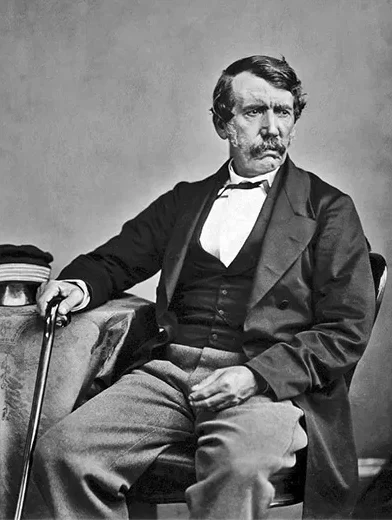
Today’s Leader of Faith
Dr. DAVID LIVINGSTONE
Home Call : 01 May 1873
Missionary, Evangelist, Physician, Explorer, Scientist, Humanitarian , Abolitionist.
David Livingstone (1813–1873) was a famous Scottish Christian missionary, best known for his extensive travels in Africa, where he combined his missionary work with exploration. His goals were to bring Christianity, commerce, and civilization to the continent and to help end the African slave trade. Africa, one of the most densely populated and remote continents, remained largely unknown to the outside world for centuries. With little development or exposure to modern civilization, many African tribes lived in isolation, practicing their own unique traditions and customs. These practices were often seen as uncivilized by outsiders. It was Livingstone who ventured deep into the heart of Africa, exploring its vast and hidden landscapes. Through his journeys, he revealed the continent’s natural beauty and rich cultural diversity to the wider world, opening a new chapter of understanding and interest in Africa. He is famous for exploring vast regions of Africa, including the discovery of the Victoria Falls on the Zambezi River, which he named after Queen Victoria. He passionately opposed the East African slave trade and sought to replace it with legitimate commerce and Christian missions. He documented the brutalities he witnessed, including the suffering of slaves abandoned by traders. His writings helped garner public support for abolishing slavery. His life continues to be celebrated through exhibitions and archives.
Livingstone was born on 19 March 1813 in Blantyre, Scotland, into a working-class family. From age 10, he worked long hours in a cotton mill while pursuing education at night. Influenced by his devout father, Christian teachings, and his love for science and nature, Livingstone sought to reconcile faith and science. He studied medicine and theology at Anderson’s University and Charing Cross Hospital in Glasgow, eventually qualifying as a physician. He initially intended to go to China as a missionary, but the Opium War redirected his path. In 1839, he was accepted by the London Missionary Society (LMS), who suggested the West Indies, but Livingstone preferred Africa. Inspired by Robert Moffat’s vision of uncharted African territories, he chose to serve there, and in 1840, he was ordained as a missionary minister, ready to serve in South Africa.
Livingstone left for South Africa in 1840. After arriving, he worked among the Tswana people, set up mission stations, and married Mary Moffat in 1845. However, due to challenges like drought, and local resistance, he moved further inland. Livingstone’s explorations led him across the Kalahari Desert to Lake Ngami and later along the Zambezi River, where he discovered Victoria Falls. His travels earned him fame as the first European to cross southern-central Africa at that latitude. Although he achieved few Christian conversions, he advocated “Christianity, Commerce, and Civilization” as a means to end the African slave trade. Returning to Britain in 1856, he became a celebrated author and speaker. Disappointed by LMS’s lack of support for his trade-focused plans, he resigned and was appointed British consul. Despite health risks, he promoted further expeditions, leading the ambitious (but troubled) Zambezi Expedition starting in 1858, supported by public and government funding. Livingstone lost contact with the outside world for six years during his African explorations. In 1871, Henry Morton Stanley found him at Ujiji, greeting him, “Dr. Livingstone, I presume?” Despite illness, Livingstone refused to leave Africa until completing his mission. He converted an African, Chief Sechele of the Kwena people, who later spread Christianity widely than any other missionaries.
David Livingstone died on 1 May 1873 in present-day Zambia from malaria and dysentery. His attendants, Chuma and Susi, buried his heart under a tree at the site. The site where his heart was buried became known as the Livingstone Memorial, where his name is carved into the tree’s trunk in Zambia. They then carried his body over 1,000 miles to the coastal town of Bagamoyo. After reaching the coast, Livingstone’s remains, along with his last journal and belongings, were shipped to Britain. In London, his body lay in repose at No.1 Savile Row, the headquarters of the Royal Geographical Society, before being interred in Westminster Abbey.
— John Michael, Rajahmundry
